
Condensation on the inside of windows may not seem as a big problem to most homeowners, but they will be mistaken. Condensation can lead to serious issues in the future if not attended to quickly and expertly.
What causes condensation, what its effects are in the household and how to fix it – read in our comprehensive blog post.
What Causes Condensation on Windows?
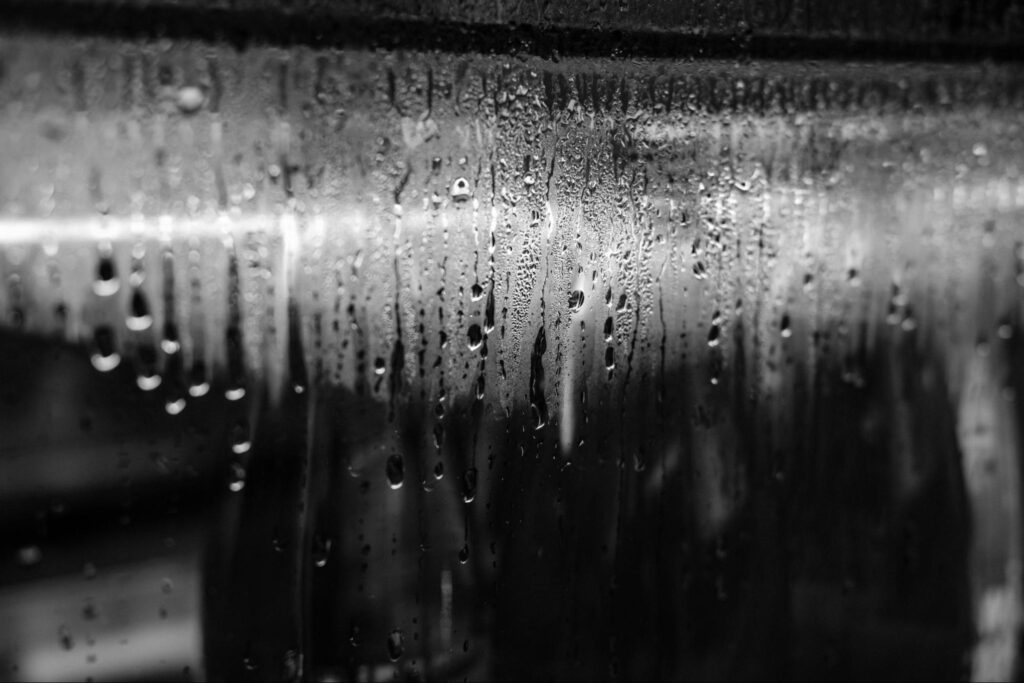
Condensation on windows is caused by humidity meeting a cold surface, in this instance – the glass of your window. This can happen especially during the autumn, winter and spring, when there’s a big difference between the indoor temperature and the outdoor temperature.
Poor air circulation can also cause condensation.
Cooler air can’t hold as much moisture as hot air, so the excess water in humid air condenses into droplets on the glass.
Interior window condensation is most likely caused by moist air, especially during the winter months. It’s really common in bathrooms, kitchens and bedrooms.
Condensation can happen on its own, but it can also be triggered. Things like showering, cooking, drying clothes indoors, or just breathing can produce excess moisture.
Poor ventilation, single-pane or poorly insulated windows can all worsen condensation inside the home. Also, poor external insulation can influence the condensation.
Effects of Condensation on Inside of Windows
Condensation on the inside of your windows may seem harmless at the start, but over time it can lead to huge problems for homeowners. Here we are going to take a look at some of the main problems caused by condensation.
Mold Growth
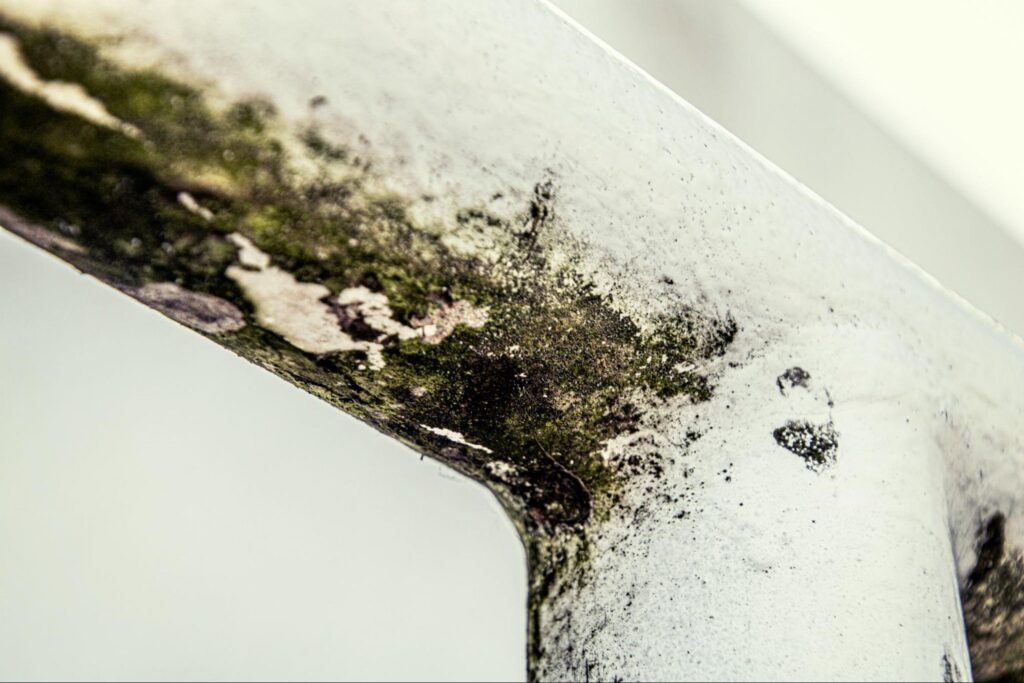
Mold spores can grow on windows, frames and nearby walls. The reason is moisture buildup creates the perfect environment.
Excessive moisture and condensation can also lead to black mold, which is damaging to surfaces and can have disastrous effects on your health.
Window Damage
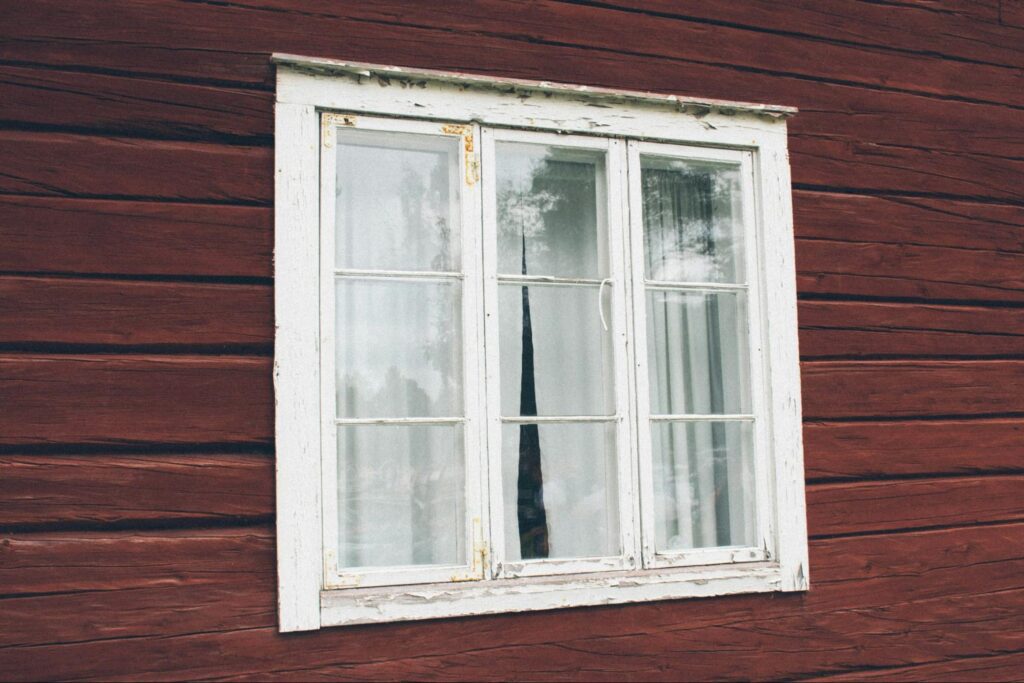
Depending on the type of windows you have, condensation can cause structural problems to the frames and sills. Wooden frames are especially endangered, because they can warp, rot, or peel under repeated exposure to moisture.
Metal windows can rust over time.
Wall Damage
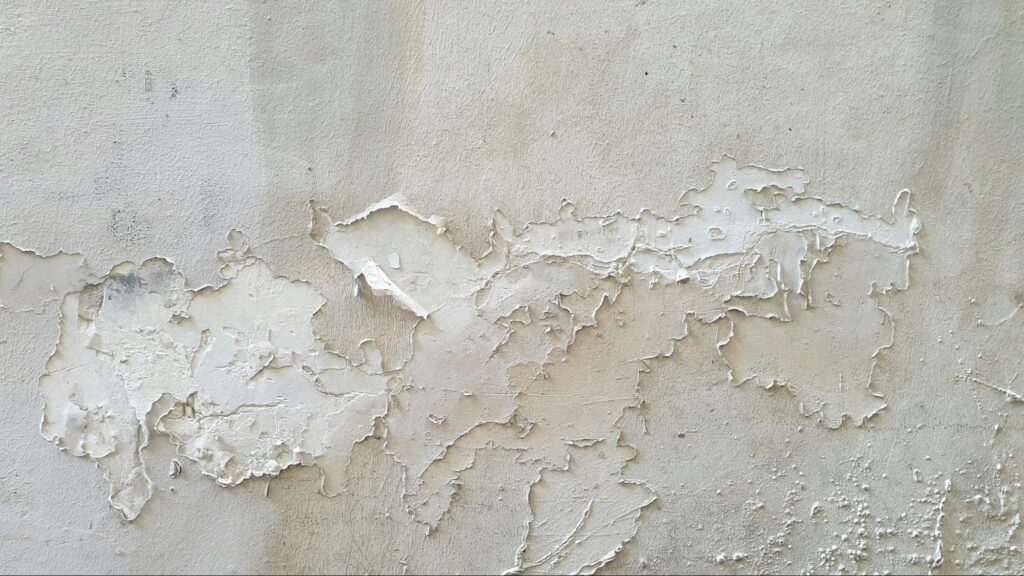
Condensation can cause damp patches and water stains on nearby walls. This can lead to damp walls, cracking paint and peeling wallpaper.
If the damage is not dealt with, the plaster on the walls may crumble.
Health Effects
Condensation and stale air can lead to serious health risks and problems. Respiratory illnesses, such as asthma and bronchitis, can be badly influenced by additional moisture in the air.
Mold growth can be damaging to the respiratory system and lead to severe allergy reactions in some people.
5 Quick Fixes to Condensation on the Inside of Windows
Eliminating condensation on the inside of your windows can be tough, but not impossible. Here, we have gathered all the working fixes to reduce condensation.
1. Open Windows and Doors to Improve Ventilation
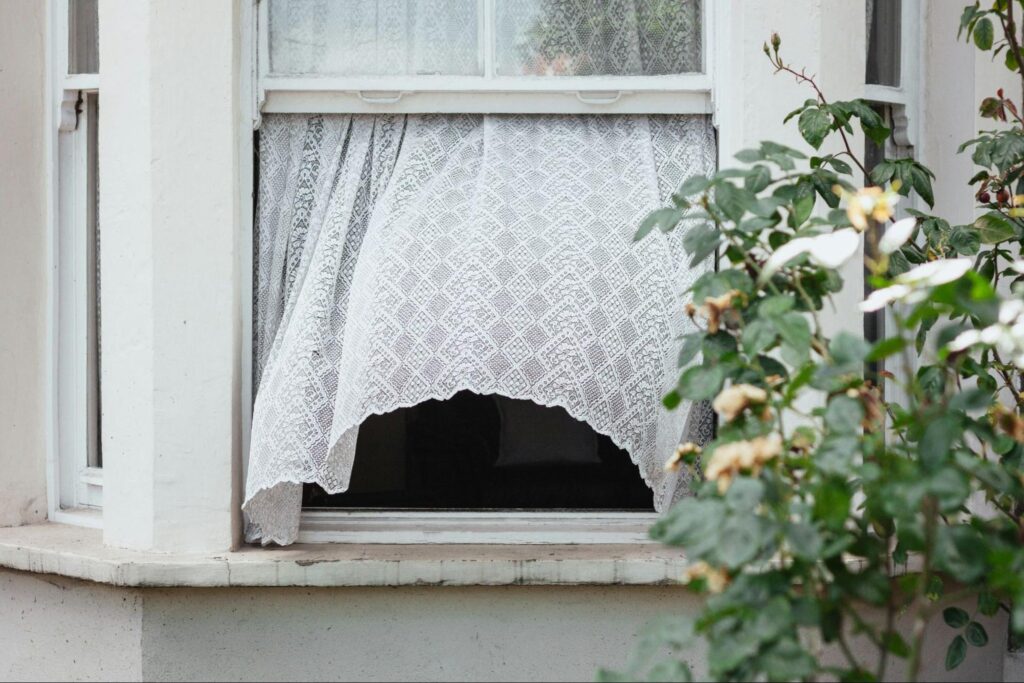
Promote air circulation by keeping a window open. This natural ventilation may seem as an obvious solution, but it really works wonders with condensation.
Allowing air to flow easily through all spaces can limit or even eliminate condensation altogether.
During the night, don’t keep the door closed where people sleep. Instead, leave the door and bedroom windows opened slightly to let in cold air.
2. Use a Dehumidifier
Dehumidifiers are a practical and cost-effective solution to stop condensation. They quite literally suck the excess water from the air and lower humidity levels.
There are various types on the market, depending on the size of the room, if you want an electrical one or with tablets. This can also help prevent the musty smell that accompanies condensation.
Refrigerant dehumidifier can change the air temperature to reduce moisture when the warm air hits the cold window.
You can search for humidifiers in your local hardware store. Make sure to ask the staff what types best suit your situation.
3. Wipe Condensation Daily

Although not a long-term solution, wiping condensation from your windows daily can decrease the risk of mold and mildew growth.
Make sure to thoroughly wipe internal condensation from the windows of your home. That way you will remove any excess water and minimise the risks for your home.
4. Reduce Indoor Humidity
Controlling the humidity in your home is key to battling moisture condensation.
Avoid drying clothes indoors. If you still have to use a ventilated room.
Always use your range hood when cooking.
Keep indoor plants to a minimum in poorly ventilated rooms.
5. Improve Ventilation
Make sure your ventilation system is working properly. Frequently clean all the air ducts to make sure fresh air flow is steady and uninterrupted. Add extractor fans to all rooms with high humidity, such as bathrooms and kitchens.
Install trickle vents on the windows to allow constant airflow.
How to Prevent Condensation on Windows In the Long Term?

Preventing condensation on windows in the long-term can be achieved with several steps. Here is a guide on how to do .
Improve Wall and Window Insulation
A long-term solution to condensation is to improve wall, window and home insulation. By hiring professionals to insulate your home, you will make sure there will be no more moisture trapped inside. Also, if you live in the Cork or Galway area, there are grants for insulation available.
Make sure you add cavity wall insulation to your home to prevent condensation. This is also very energy efficient for your household and will positively impact your electricity and heating bills in the future.
This can be a little heavy on the cost, but it can increase the price of your property in the long-term.
Upgrade Windows
Change your windows to double or triple-glazed ones. Single glazed windows can lead to more condensation inside. When choosing the right window, look for low emissivity coatings to reduce heat transfer. Also, choose windows with window vents to help reduce window condensation.
Ensure the new windows seals are intact and conduct regular checks.
Regular Maintenance
Regular maintenance is key to defeating condensation in your home. Check for window leaks and fix them if there are any.
Replace any damaged parts of windows or window seals immediately.
Is It Normal to Have Condensation on Double Glazed Windows?
Double-glazed windows can have condensation, but there are a few things to keep in mind.
While condensation inside and outside of the window is not uncommon, condensation between the window panes is a sign of a huge problem. If moisture gets trapped between the panes, this indicates either your window seal is broken or you have a failed double glazing.
In both cases, you have to reach out to a professional to check your windows.
To distinguish between the types of condensation, try wiping the water. If you can’t wipe it, then it’s inside the sealed unit.
Frequently Asked Questions
What is condensation?
Condensation happens when warm air touches a cold surface, suck as window glass. The result is moisture build-up on the windows.
Is condensation dangerous?
Condensation in itself is not dangerous. However, if your home is exposed to condensation for long periods of time, you risk mold and mildew growth, structural problems to walls and serious health issues.
Is condensation between the panes of the window normal?
Double-glazed windows shouldn’t have any moisture trapped inside between the window panes. This indicates a serious problem with seals of the construction.

